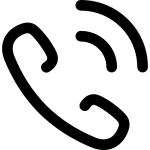Top Pistachio Producing Countries
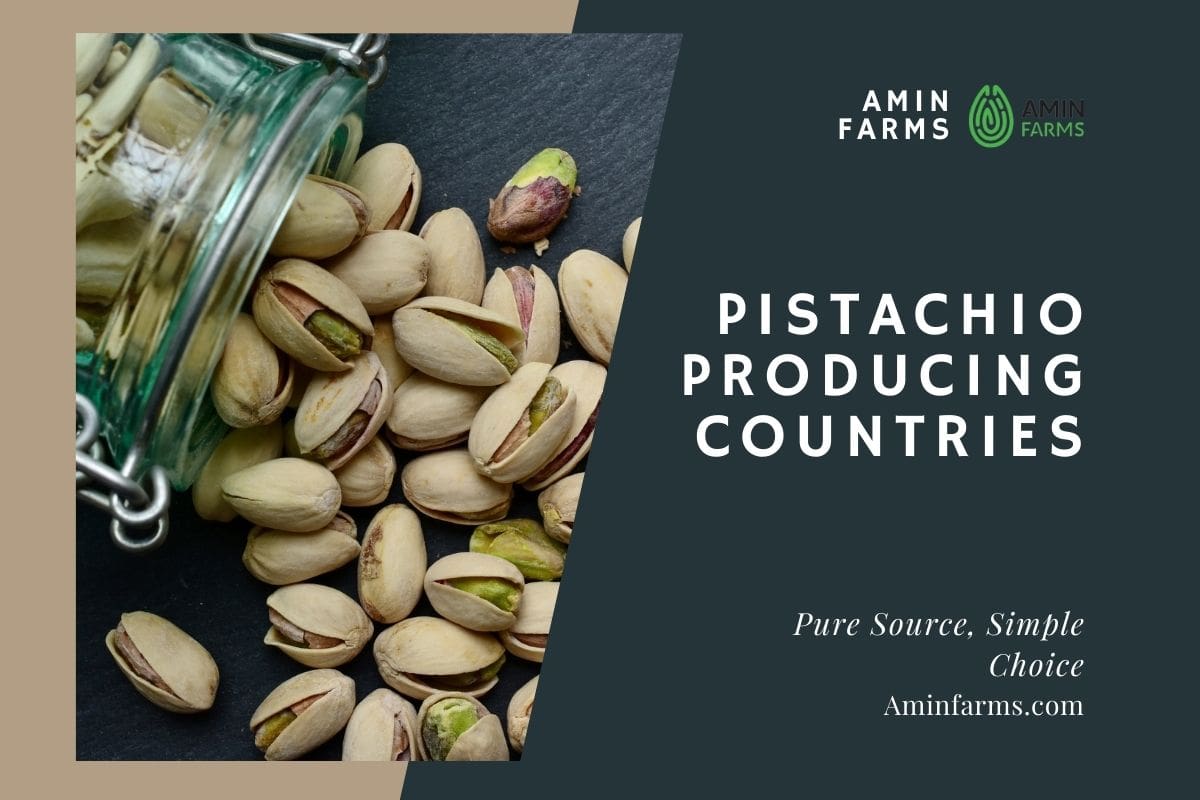
Pistachios, that little green nut with a rich flavor, are much more than just a tasty snack. They’re a strategic commodity in global markets. Thanks to their high nutritional value, countless health benefits, and wide range of uses in food, confectionery, and even pharmaceuticals, demand for pistachios has been steadily growing around the world. And 2025 is no exception. The global pistachio market continues to be dynamic and highly competitive.
Among the key players in this space are the major pistachio-producing countries, each contributing significantly to global supply. Iran, in particular, stands out as one of the top pistachio countries. Known as the birthplace of pistachios, Iran has a long tradition of cultivating this crop and remains a leading name in the industry. Iranian pistachios are especially prized for their exceptional quality, and they’ve built a strong reputation in markets around the world.
If you’re curious to know which pistachio-producing countries are leading the way in 2025 and want an up-to-date look at the global market for this valuable product, this article will guide you through everything you need to know.
The Global Pistachio Market in 2025
The global pistachio market in 2025 is looking dynamic and full of promise as recent years of steady growth continue. More and more consumers are becoming aware of the health benefits of pistachios, such as their high levels of protein, fiber, and antioxidants. This awareness, combined with their expanding use in snacks, desserts, ice cream, and even cosmetic products, is boosting demand worldwide.
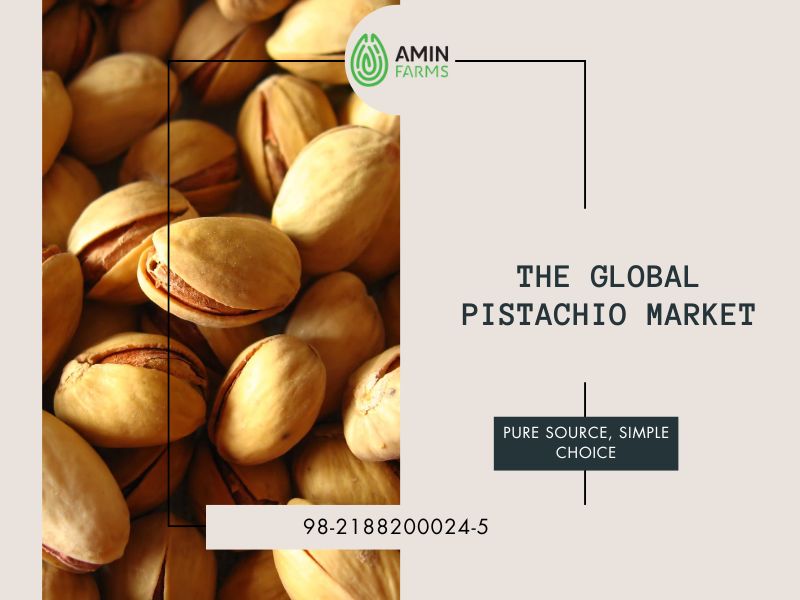 Advances in processing and packaging have also made pistachios easier to access and more attractive to buyers. At the same time, the market faces some real challenges. Climate change, including droughts and shifting temperatures, can affect both the volume and quality of crops in major pistachio-producing countries. In addition, increasing global competition and geopolitical tensions may impact pricing and supply chains.
Advances in processing and packaging have also made pistachios easier to access and more attractive to buyers. At the same time, the market faces some real challenges. Climate change, including droughts and shifting temperatures, can affect both the volume and quality of crops in major pistachio-producing countries. In addition, increasing global competition and geopolitical tensions may impact pricing and supply chains.
Still, the outlook for pistachio production in 2025 remains positive. Much of the expected growth is being driven by rising demand in Asian markets and a growing trend toward healthy snacking in developed countries. This creates significant opportunities for producers, exporters, and everyone involved in the industry.
Discover More: How to Import Pistachios from Iran?
Key pistachio Production Trends
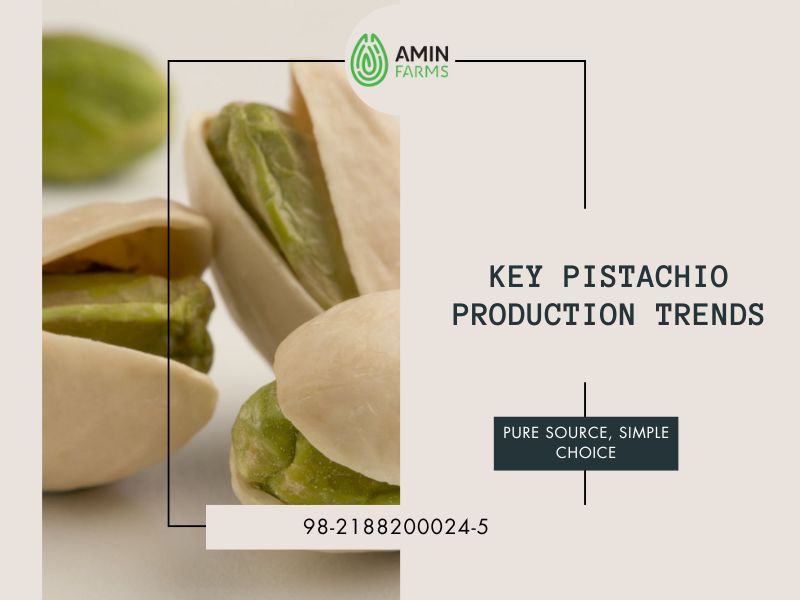 In 2025, pistachio production will be shaped by several key trends aimed at improving efficiency, sustainability, and resilience in the face of environmental and economic challenges. Here are some of the most important ones to watch:
In 2025, pistachio production will be shaped by several key trends aimed at improving efficiency, sustainability, and resilience in the face of environmental and economic challenges. Here are some of the most important ones to watch:
- Smart farming and water efficiency: With growing concerns about water scarcity and climate change, more pistachio growers are expected to adopt advanced drip irrigation systems, soil moisture sensors, and precision agriculture technologies. These tools, including satellite data and drones, help optimize the use of water and nutrients, reduce waste, and make farming more efficient overall.
- Pest and disease resistance: Ongoing research and development will focus on creating new pistachio varieties that are more resistant to common pests and diseases like psyllids and gummosis. This not only reduces the need for chemical pesticides but also supports more stable yields and better-quality crops.
- Mechanization and automation: To address rising labor costs and improve efficiency, pistachio growers are increasingly turning to modern machinery in their orchards. Equipment such as mechanical harvesters and automated systems for sorting and grading are becoming more common. These technologies are beneficial in areas where finding enough skilled labor is becoming more difficult, a challenge faced by many pistachio-producing countries.
- Sustainability and certifications: There is a rising demand for more sustainable farming methods, such as organic production and practices that lower carbon footprints. Producers who can meet international sustainability standards and obtain certifications will have a competitive edge in the market. Today’s consumers care deeply about environmental and social responsibility, and they are increasingly supporting brands that align with those values.
Altogether, these trends are shaping a future for pistachio production in 2025 that is more sustainable, more innovative, and better prepared to meet global demand. Adapting to these changes will be key to staying relevant and competitive in the market.
Discover More: The Bright Future of Pistachio Production in Iran
Iran: The Green Gold Leader
Iran, a country with thousands of years of history in pistachio cultivation, will continue to be one of the leading pioneers in the global market for green gold in 2025. Iranian pistachios are well known for their unique flavor, high quality, and wide variety of types. They hold a special place in international markets. For centuries, pistachio orchards in provinces such as Kerman, Khorasan, and Yazd have not only provided income for farmers but have also become an essential part of Iran’s culture and economy.
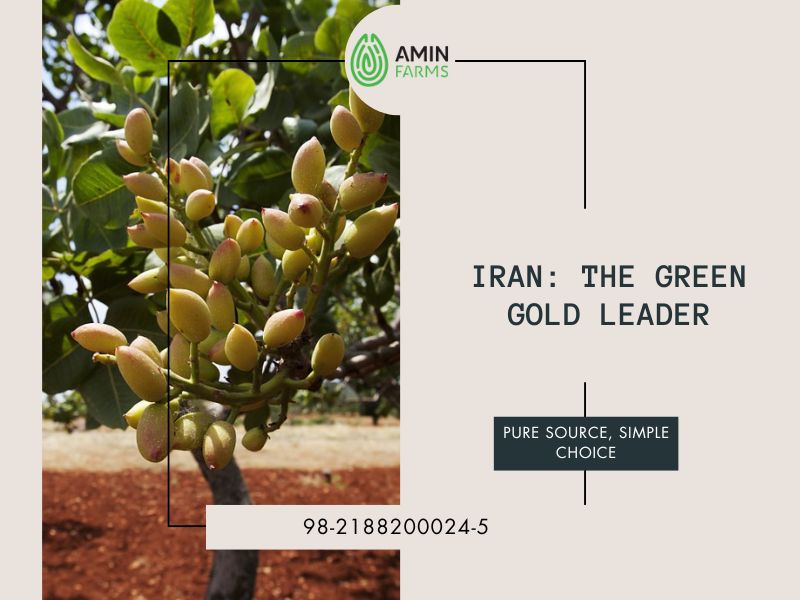 Despite challenges such as climate change, water shortages, and economic sanctions, Iranian growers have used their deep knowledge and hands-on experience to protect and improve both the quality and quantity of their pistachio crops. In 2025, greater focus on water-efficient farming methods and pistachio varieties that are adapted to changing weather conditions is expected to help Iran maintain its strong position in the industry.
Despite challenges such as climate change, water shortages, and economic sanctions, Iranian growers have used their deep knowledge and hands-on experience to protect and improve both the quality and quantity of their pistachio crops. In 2025, greater focus on water-efficient farming methods and pistachio varieties that are adapted to changing weather conditions is expected to help Iran maintain its strong position in the industry.
With global demand rising for healthy and organic products, Iranian pistachios are in a great position to win a larger share of international markets. These nuts are naturally nutritious and often grown with limited use of chemicals. Investment in supply chains, processing systems, and effective marketing will help Iran remain among the top pistachio countries.
As one of the most experienced pistachio-producing countries, Iran is well-positioned to continue leading the industry in the years ahead.
Discover More: Types of Persian Pistachios
United States: A Growing Powerhouse
Alongside Iran, the United States has emerged as a rising power in the global pistachio market, playing an increasingly important role. Over the past few decades, California has become the heart of American pistachio production. With its modern farming techniques, significant investments in research and development, and the use of advanced mechanized systems, the United States has rapidly grown its share in the market.
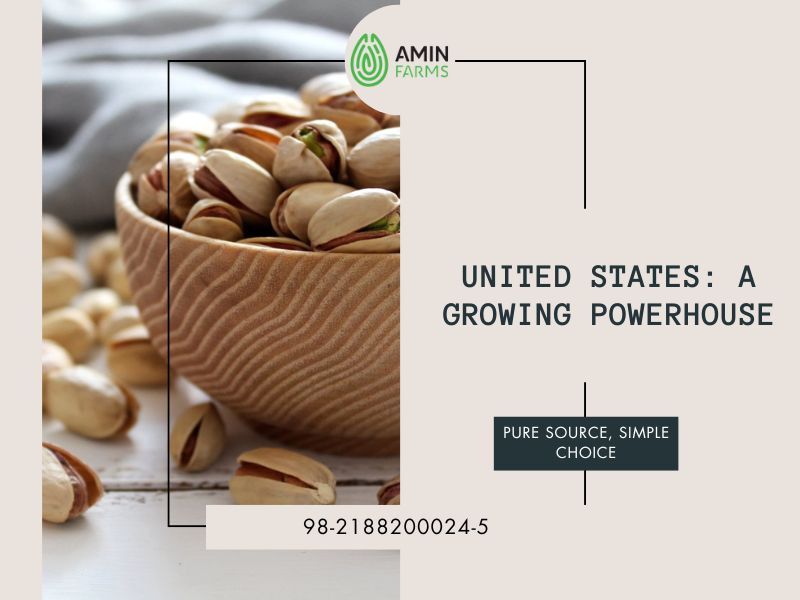 American growers focus heavily on efficiency, product consistency, and meeting strict quality standards. This focus has allowed them to compete confidently on the global stage and stand out among leading pistachio-producing countries.
American growers focus heavily on efficiency, product consistency, and meeting strict quality standards. This focus has allowed them to compete confidently on the global stage and stand out among leading pistachio-producing countries.
Looking ahead to 2025, the United States is expected to continue on its upward path. Innovation in high-performing pistachio varieties that are more resistant to disease, along with the use of precise irrigation systems and innovative orchard management, will support more sustainable production. Strong marketing efforts and the development of well-known brands, especially in Asian and European markets, are also helping to strengthen the position of American pistachios.
Despite challenges such as water pricing fluctuations and increasing global competition, the United States is set to remain one of the top pistachio countries. Its combination of scientific approach and strong commercial strategy makes it a key and influential player in the future of pistachio production and export.
Turkey and Emerging Producers
Turkey, with its long-standing tradition of pistachio cultivation, remains one of the steady and essential players in the global pistachio market in 2025.
The country’s famous Antep pistachios are internationally recognized for their distinct flavor and are widely used in sweets, especially in baklava. Despite fluctuations in yield caused by alternate bearing patterns in pistachio trees, Turkey is still expected to produce a significant volume of pistachios in 2025. Through investments in modern farming and processing methods, the country aims to strengthen its position and meet both domestic and export demand.
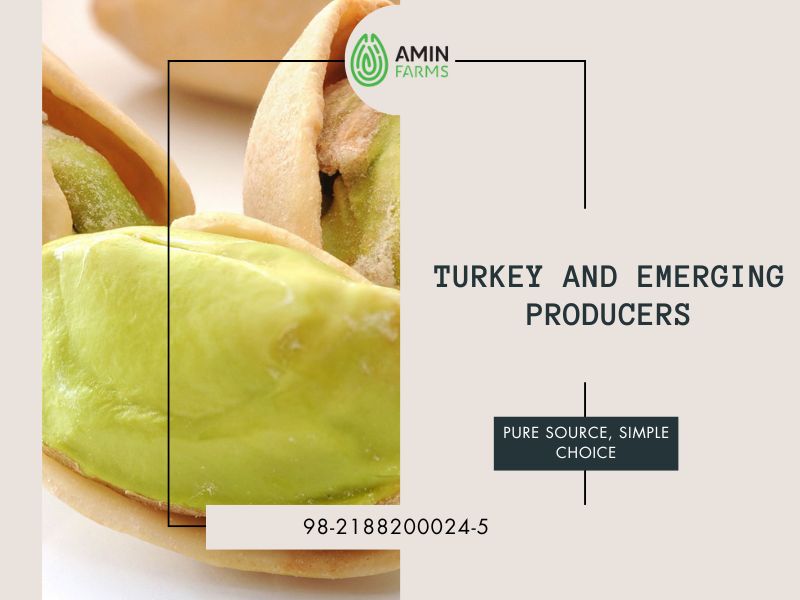 Beyond Turkey, several other nations are also gaining ground as pistachio producers. In China, the Xinjiang province is quickly becoming a key area for pistachio cultivation. China is not only meeting its growing domestic demand but is also beginning to expand its role in global exports.
Beyond Turkey, several other nations are also gaining ground as pistachio producers. In China, the Xinjiang province is quickly becoming a key area for pistachio cultivation. China is not only meeting its growing domestic demand but is also beginning to expand its role in global exports.
In Europe, countries like Greece and Spain, although smaller in production compared to major players, are steadily increasing their output by leveraging favorable climates and focusing on high-quality cultivation. Australia, too, is emerging with strong potential. Through the expansion of pistachio orchards and the use of advanced technologies, Australian producers are expected to exceed domestic needs and begin entering export markets shortly.
These emerging pistachio-producing countries are contributing to a more diverse and competitive global supply. Their growing presence is helping reshape the landscape of pistachio production in 2025, adding new dynamics to the industry while offering both challenges and opportunities for established producers.
Factors Shaping Pistachio Production
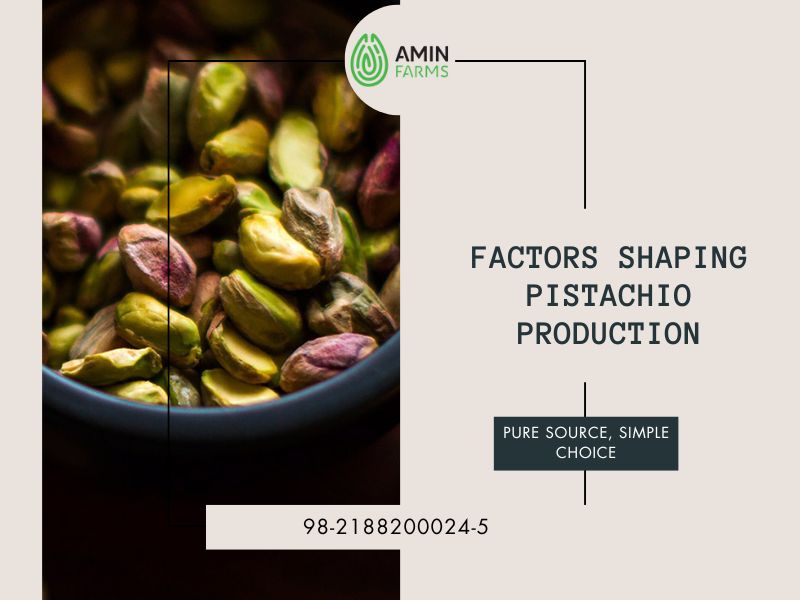 Pistachio production in 2025 is shaped by a complex and interconnected set of factors that can significantly affect global supply and, in turn, pricing. Understanding these factors is essential for grasping the dynamics of the pistachio market and anticipating future trends. Here are some of the main drivers affecting pistachio production today:
Pistachio production in 2025 is shaped by a complex and interconnected set of factors that can significantly affect global supply and, in turn, pricing. Understanding these factors is essential for grasping the dynamics of the pistachio market and anticipating future trends. Here are some of the main drivers affecting pistachio production today:
- Climate conditions: Pistachios are highly sensitive to climate. Severe droughts, heatwaves, unexpected cold snaps, spring frosts, and irregular rainfall patterns can all impact crop yields and nut quality in major pistachio-producing countries such as Iran, the United States, and Turkey.
- Alternate bearing: Pistachio trees naturally go through a cycle known as alternate bearing, where a heavy production year is often followed by a lower yield the next. This biological pattern creates challenges for planning and maintaining stable supply, although newer varieties are less affected by it.
- Water resource management: With water scarcity becoming a serious issue in many pistachio-growing regions, access to water and efficient water use is more important than ever. Techniques like drip irrigation and precision agriculture are essential tools for sustaining production. Rising water costs also have a direct impact on profitability.
- Pests and diseases: Outbreaks of pests and plant diseases can cause severe damage to pistachio orchards. Effective pest control, the development of resistant cultivars, and good orchard hygiene are key to protecting tree health and maintaining product quality.
- Investment and technology: Levels of investment in agricultural infrastructure, research into new pistachio varieties, and the use of advanced technologies, such as mechanical harvesting, intelligent irrigation systems, and modern processing methods, have a direct effect on productivity and cost efficiency.
- Government policies and trade: Supportive government policies, including subsidies, financing programs, trade agreements, and import or export tariffs, can all influence producers’ incentives and the global flow of pistachios. These factors often play a significant role in shaping competitiveness and market access.
Climate and Technology Impacts on pistachio production
Climate change and technological innovation are two major forces shaping the future of pistachio production in 2025. Unpredictable weather patterns, extreme heat, droughts, and sudden cold spells are making it harder for farmers to maintain both yield and nut quality. In response, technology is offering robust solutions.
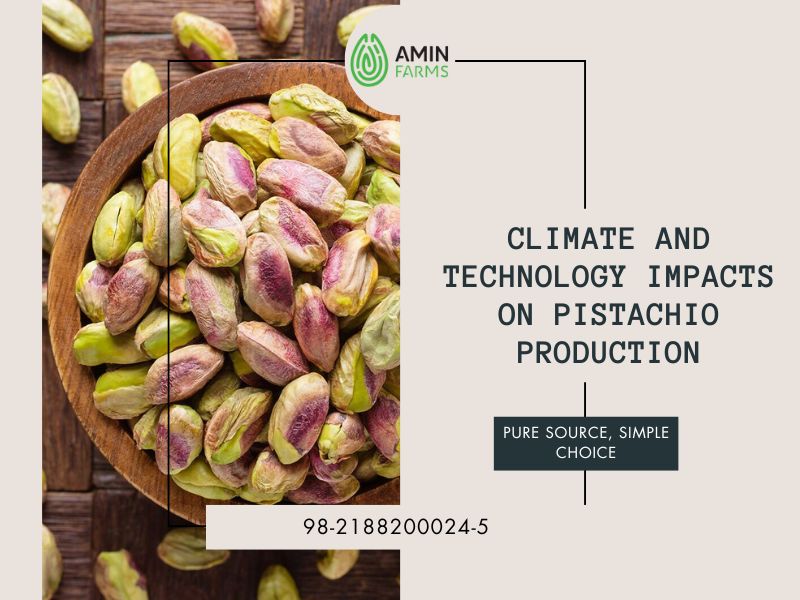 Precision irrigation, soil sensors, and satellite-based farm management tools are helping growers use water more efficiently. At the same time, new pistachio varieties resistant to drought and pests are making orchards more resilient.
Precision irrigation, soil sensors, and satellite-based farm management tools are helping growers use water more efficiently. At the same time, new pistachio varieties resistant to drought and pests are making orchards more resilient.
Mechanized harvesting and processing also improve efficiency and lower costs. Together, climate challenges and innovative technologies are becoming deeply connected. Their interaction will play a key role in driving long-term sustainability, helping pistachio-producing countries adapt to new conditions while meeting the growing global demand.
Why Iran Remains a Top Choice?
Despite facing various challenges, Iran remains a top choice in the global pistachio market in 2025. This strong position is rooted in several key factors, most notably the exceptional diversity and quality of Iranian pistachios. The wide range of varieties grown in Iran meets the needs of different international markets, from snacking and mixed nuts to use in the food and pastry industries. Their rich flavor, large size, and vibrant color set them apart from other options.
 Beyond quality, Iran’s long tradition and deep local knowledge in pistachio farming have been passed down through generations, helping preserve high standards of production. Even with certain limitations, Iranian pistachios are often welcomed in markets that value natural and organic products, as they are relatively less industrialized compared to other sources.
Beyond quality, Iran’s long tradition and deep local knowledge in pistachio farming have been passed down through generations, helping preserve high standards of production. Even with certain limitations, Iranian pistachios are often welcomed in markets that value natural and organic products, as they are relatively less industrialized compared to other sources.
While Iran’s export and processing infrastructure still needs modernization, it provides a foundation for reaching global markets. This unique blend of natural excellence, traditional expertise, and organic appeal continues to secure Iran’s special place in the future of pistachio trade.
Global Production Dynamics and Quantitative Forecasts
The world of pistachio production is always evolving, with forecasts painting a picture of growth, challenges, and opportunities for buyers and sellers alike. Understanding these dynamics helps us navigate the market with confidence, appreciating how each region’s contributions shape the global supply. From surging yields to potential shortages, it’s a story of balance between abundance and specialty needs.
When we look at the bigger picture, it’s clear that pistachios aren’t just a snack—they’re a global commodity influenced by nature, economics, and strategy. Let’s dive into the details to see what’s on the horizon.
Global Production Forecast 2025/2026: Supply Surge and Market Volatility
The global pistachio supply is gearing up for a notable change, one that could reshape how businesses source this versatile nut. At the center of this shift is a major boost from the United States, which is set to lead the way in volume and influence market trends for the coming year.
This surge promises more availability but also brings some unpredictability, reminding us of the delicate balance in agricultural markets. It’s an exciting time for those in the industry, as strategies adapt to these new realities.
Quantitative Dominance by the United States
The United States is expected to strengthen its role as the top global producer in the 2025/2026 crop year, with projections pointing to an impressive harvest of 726,400 metric tons (MT). This marks a substantial 44.2% increase from the 503,700 MT of the previous year, claiming over 40% of the world’s total supply.
Such dominance creates a favorable environment for buyers seeking large quantities of consistent, in-shell pistachios. It’s particularly advantageous for industrial users who prioritize volume and reliability in their operations.
Appreciating this leadership helps us see how one country’s advancements can benefit the entire market, making high-quality pistachios more accessible worldwide.
Global Market Rebound and Supply Metrics
Overall, the world’s pistachio production is on track to grow from 1.331 million MT in 2024/2025 to about 1.462 million MT in 2025/2026, thanks largely to the U.S. record output. With global consumption around 1 million MT, this could lead to a surplus, easing pressures on supply chains.
Ending stocks are likely to rise, with the U.S. alone projected to see theirs more than double to 181,600 MT. For chief procurement officers, this means planning for higher inventory costs or leaning into just-in-time buying to take advantage of possible price dips from the excess supply.
This rebound highlights the resilience of the pistachio industry, turning potential challenges into opportunities for smarter sourcing and market stability.
The Iranian Baseline and Turkish Volatility
Iran continues to be a key player, with an estimated 200,000 MT output for 2024/2025, holding strong in high-value segments like pistachio kernels. Its consistent presence ensures a reliable source for those seeking premium quality.
Turkey, coming off a robust 415,500 MT in 2024/2025, faces the natural cycle of alternate bearing in pistachio trees, which often means a dip after a peak year. This expected drop in 2025/2026 could shift demand toward U.S. and Iranian products, intensifying competition for specialty items.
The market’s split is evident: the U.S. handles the bulk of standardized supply, while Turkey’s ups and downs underscore the unique value of Iranian varieties. For buyers needing specific flavors or traits, Iranian options remain essential, as alternatives can’t always match that niche excellence.
Understanding these patterns deepens our respect for the industry’s complexity, where tradition meets modern forecasting to keep the flow of pistachios steady and diverse.
| Country/Region | 2024/2025 Production (MT) | 2025/2026 Forecast (MT) | YoY Change (%) |
|---|---|---|---|
| United States | 503,700 | 726,400 | +44.2% |
| Turkey | 415,500 | Volatility Expected | N/A |
| Iran | 200,000 | Estimate Pending | N/A |
| Global Total | 1,331,000 | 1,462,000 | +9.8% |
